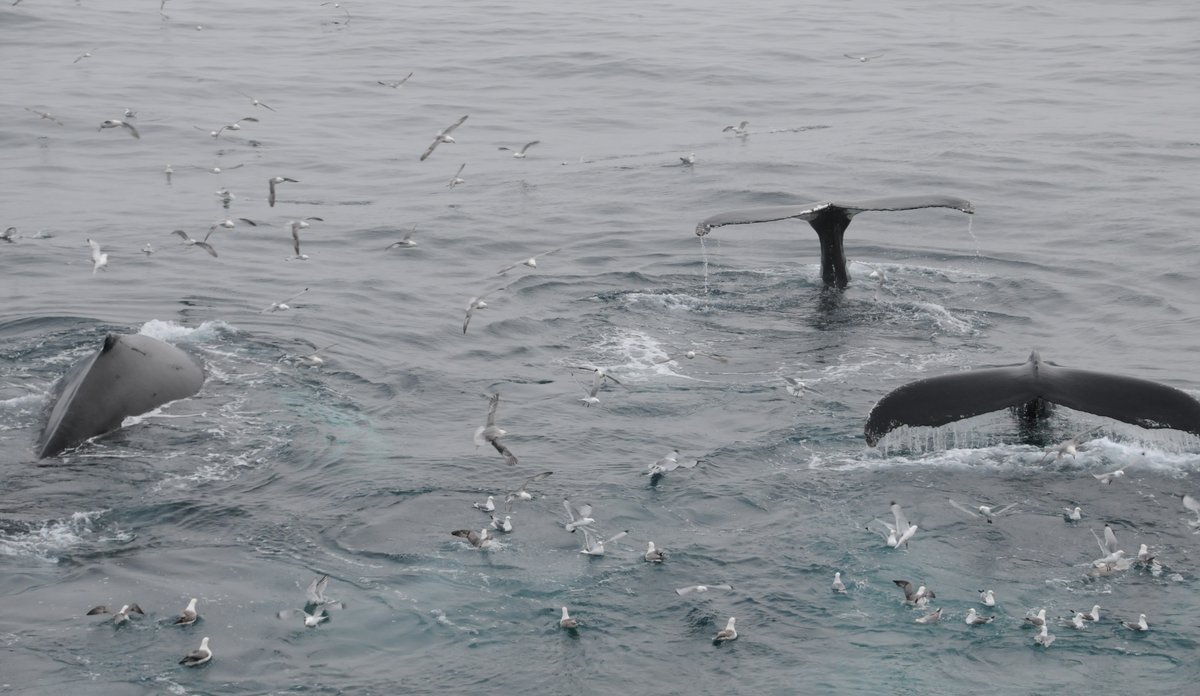Far more migrating baleen whales in the Atlantic than in the Pacific

Humpback whales hunting just east of Jan Mayen.
Photo: Leif Nøttestad / HavforskningsinstituttetPublished: 27.08.2019 Updated: 30.08.2019
A review article hot off the press has compared the abundance of baleen whales in the various ocean areas around the Arctic. The researchers observed big differences between where the various species live.
“Bowhead whales, which live in the Arctic all year round, are most abundant in the Pacific Ocean and in the northwest Atlantic”, says Tore Haug, a Head of Research at the Institute of Marine Research (IMR) and one of the authors behind the article.
Never recovered from hunting
In the North Pacific, there is a robust population of around 20,000 bowhead whales, whereas in the Atlantic Ocean there are just a few thousand individuals. There aren’t many at all in our waters in the northeast Atlantic”, says Haug.
“Part of the explanation is that they were hunted heavily between 1611 and 1811. Over two centuries later, the population still hasn’t managed to recover”, he says.
Bowhead whales were also hunted in the Pacific Ocean, but there the population has managed to recover.
“So now they’re being hunted again there”, says Haug.
Plentiful food
When it comes to the baleen whales that migrate between the Arctic and warmer waters, such as the humpback whale, minke whale, fin whale and blue whale, the situation is the complete opposite.
“In the North Atlantic there are several hundred thousand of these migratory baleen whales, whereas in the North Pacific there are just a few hundred of them”, says Haug.
In the Atlantic, they are particularly abundant in the northeastern and central parts of the ocean. One important reason for this fact is that this is where the warm waters of the Gulf Stream meet the cold waters of the Arctic.
“This makes these areas very productive, with lots of krill and pelagic schooling fish like capelin, mackerel and herring”, says Haug.
Migrate between the ice edge and the Equator
As a result, baleen whales come here to eat in the summer, before heading south towards the Equator to mate as winter approaches.
“So they are really just summer guests. They come to our waters to eat”, explains Haug.
To participate in this feast, the whales cover several thousand kilometres.
“We know that they travel from the Cape Verde Islands or the Caribbean all the way up to the ice edge at a latitude of around 80 or 81 degrees. So you’re talking huge distances”, says Haug.
Monitored since the 1980s
The new study is based on many years of monitoring, and it is the result of cooperation between researchers from several different countries.
“This is the first time that a comparison of this kind has been made between the populations in the North Atlantic and North Pacific”, says Haug.
For the northeastern and central Atlantic, the researchers have data going right back to the 1980s. For the northwestern Atlantic and northern Pacific, figures go back to the early 2000s.
